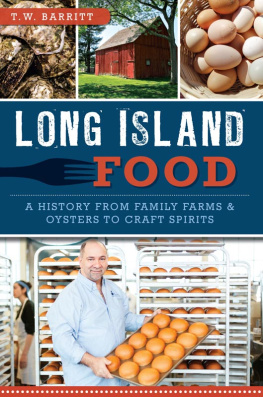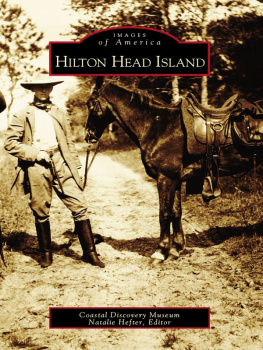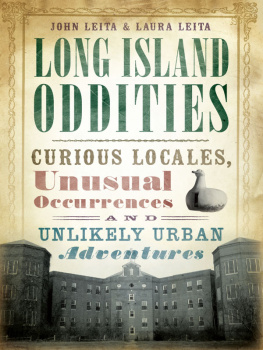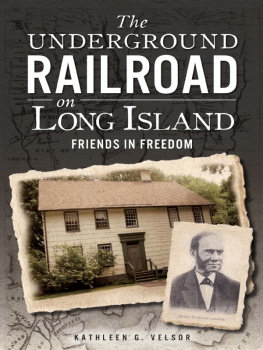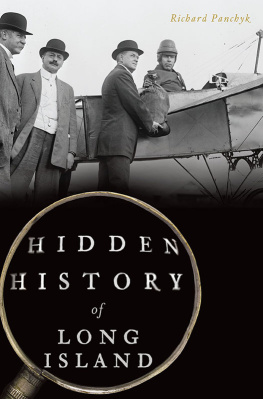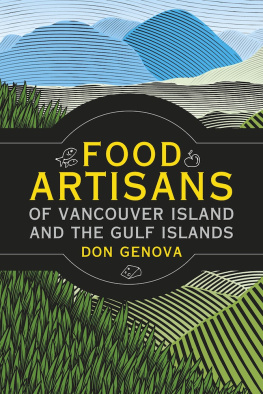


Published by American Palate
A Division of The History Press
Charleston, SC 29403
www.historypress.net
Copyright 2015 by T.W. Barritt
All rights reserved
Cover images, front cover: oyster image by Jacob Skoglund; barn and eggs image by T.W. Barritt.
First published 2015
e-book edition 2015
ISBN 978.1.62585.371.4
Library of Congress Control Number: 2015944410
print edition ISBN 978.1.62619.846.3
Notice: The information in this book is true and complete to the best of our knowledge. It is offered without guarantee on the part of the author or The History Press. The author and The History Press disclaim all liability in connection with the use of this book.
All rights reserved. No part of this book may be reproduced or transmitted in any form whatsoever without prior written permission from the publisher except in the case of brief quotations embodied in critical articles and reviews.
Acknowledgements
Much like the evolution of Long Island food, this book is the culmination of a journey, with many stops and side trips along the way. I want to thank my parents, Dorothy and Jim Barritt, who taught me to cook and inspired me to explore Long Island at an early age.
I must thank all the people who are shaping the future of Long Island food and who were so generous with their time in sharing their stories with me. I am in awe of the work that you do. You are writing the story of Long Island food each day, and this book is dedicated to you.
There were many people who were instrumental in bringing this volume to life. Whitney Landis and The History Press found me and asked me to consider taking on the significant challenge of chronicling the story of Long Island food. Special thanks go to Jacob Skoglund, who provided first-rate support as image curator and photographer for the project.
Many thanks and much appreciation go to the talented photographers whose excellent work illustrates this story: John Barritt, Richard Bowditch, Lucia Cascio, Randee Daddona, Adrian Fanning, Ana Miyares and Jacob Skoglund.
There were many people who offered their guidance and support. Thanks to Kathy Curran and Wendy Palhernus-Annibell at the Suffolk County Historical Society. Much appreciation goes to Lydia Walshin, Jane Lottes and Monica Marshall for their wise counsel; Matthew Kalamidas for his photo image advice; and Steve Price for his superhuman editing and proofreading skills. Special thanks to Laura Lucky Luciano, who was generous in making introductions.
Thanks go to the faithful readers of my blog, Culinary Types, who first showed an interest in the stories I shared about Long Island food, and to Betsy Davidson and Eileen Duffy of Edible Long Island and Edible East End, who encourage me to continue to explore and tell stories about what Long Islanders eat.
Finally, I must give a nod to my friend and colleague Splint McCullough, who was present the day my plan to write about food first took shape and who has provided me with endless material and encouragement ever since.
Prologue
Long Island Food
A Work in Progress
I was well into my teenage years before I realized that there was more to food than TV dinners. Im ashamed to admit that I considered the TV dinner to be an epicurean wonder. It was my ethnic food. The perfect aluminum packaging, the geometric sections that held each food item and the very idea that the main course and the dessert could exist side by side inspired endless fascination. The fact that we could enjoy our piping-hot turkey with gravy, whipped mashed potatoes, sweet peas and apple cobbler while watching an episode of Bewitched was just the icing on the cake. Clearly, I had a limited frame of reference when it came to food.
I grew up on suburban Long Island in the 1960s. Life was catapulting toward the space age. New home construction was booming. Convenience and economics drove food purchases. A young mother with four boys needed meal options that were affordable and easy to assemble. It was all about feeding the family three square meals a day. White bread, Jell-O and tuna casserolethats what I remember. Our idea of haute cuisine was pigs-in-a-blanket. A cone of Carvel soft-serve vanilla ice cream with sprinklesenjoyed lustfully in the back seat of a Ford station wagonwas a real treat.
We never thought of Long Island as a food haven. I began to develop a sense of place in Mrs. Zulaufs third-grade class. Our history text was a chronology of Long Island people and events. We learned that Native Americans had once occupied our suburban plots of land and that windmills had dotted the East End of Long Island, but there was no mention of a distinctive cuisine.
The idea of a Long Island food culture was really not so outlandish. There were hints along the way. We lived a short distance from the local agricultural college located in a town called Farmingdale.
Even in the suburban neighborhood of my youth, farming was happening right across the street (although we likely considered it large-scale gardening). Our neighbors, Rose and Vincenzo Maio, had emigrated from Italy and settled in Massapequa in the early 1950s. They had constructed their home by hand on a plot of land that consisted of about one-quarter of a generous suburban block. Mr. and Mrs. Maio worked the land every day of the year. They raised lettuce, escarole, garlic, zucchini, potatoes, string beans and tomatoes. They cultivated fragrant herbs for cooking such as bay leaves, dill, parsley and basil. The property contained apple trees, pear trees, peach trees, fig trees and grapevines.
The Maios lived frugally. Mrs. Maio canned the fruits and vegetables they harvested. She also propagated plants, flowers and vegetables from the previous years seeds. Today, we call that sustainability. The Maios small farm would rival the size and scope of many modern Community Sponsored Agriculture (CSA) projects on Long Island, designed to feed multiple families.
Mr. and Mrs. Maios story was really no different than those of the first settlers who came to Long Island. Most dont realize that when originally settled more than three centuries ago, Long Island was a thriving agrarian society. Long Islands first European transplants were not professional farmers but property owners who learned gradually to support themselves using the natural resources around them.
The story of Long Island food is one of past, present and future. It is a stew of many flavorsethnic diversity, commerce and economy, industrialization, convenience, traditionand today a new food sensibility that draws on all of those ingredients and more.
Here are some basic statistics about Long Island. Shaped like a fish with two fins and surrounded by water, Long Island is 118 miles long and 20 miles wide. Formed by a glacier more than six thousand years ago, it is the longest contiguous island in the United States. When we talk about Long Island, we mean the counties of Nassau and Suffolk, which cover central and eastern Long Island. Technically, the boroughs of Brooklyn and Queens are part of the same geographical package, but they are not considered Long Island in the colloquial sense.
The essentials of Long Island food havent changed much since Native Americans occupied the land. This is an island where fishing, farming and livestock flourished. Native Americans called Long Island
Next page
